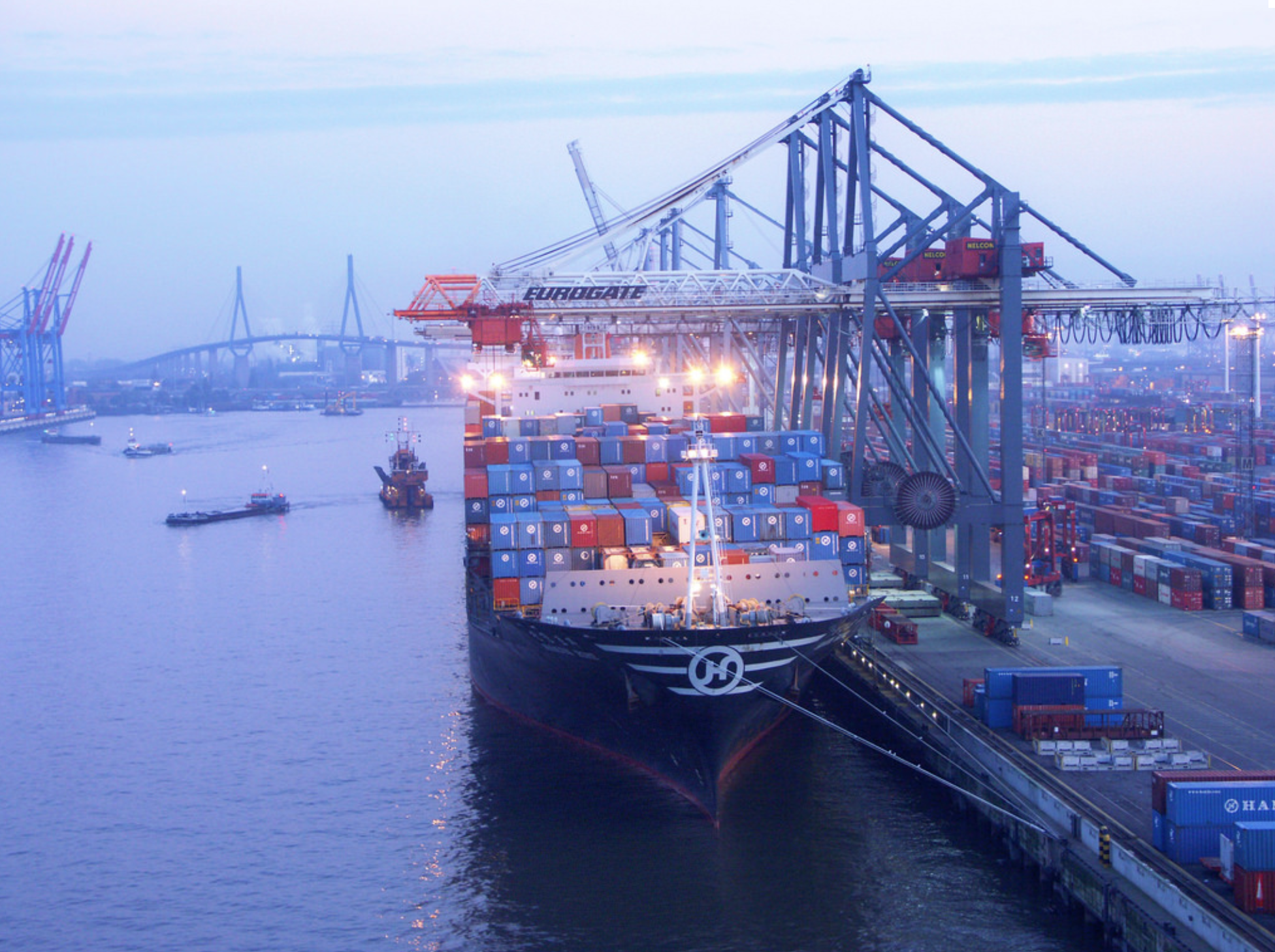This story originally appeared on Houston Public Media.
Walking alongside the River Elbe, it’s easy to get the sense of Hamburg’s long history as a port. Brick warehouses date back to the mid-nineteenth century — most of those have been converted to offices or museums.
“The first people were starting to trade a little bit at this crossing of these two rivers,” says Axel Mattern, CEO of the Port of Hamburg Marketing Association. He’s pointing to a spot all but buried amongst the brickwork, where the River Alster meets the Elbe — Hamburg’s equivalent of Allen’s Landing. “Whatever started in Hamburg was here. It’s not so attractive anymore.”
But sailing along the river toward the North Sea, the old warehouses vanish, replaced by modern terminals, soaring blue cranes, and massive cargo ships.
“Here we handle about 10 million tons of iron ore and coal for coal refineries or iron or steel production somewhere in the hinterland,” says Mattern, as he draws attention to Hamburg’s biggest bulk terminal.
Goods from Houston — including coal, for German power plants — are offloaded at the Port of Hamburg and transferred to trains or barges. From there, they travel south or east, bound for destinations all over Central Europe.
“One example would be machinery,” Mattern says. “We can distribute the cargo from the terminal in Munich to a final destination, which would be, for example, Linde, which is a huge construction company in Bavaria, constructing parts and refinery columns for the chemical industry.”
Linde then sends its products to Hamburg and on to foreign customers. That includes companies here in Greater Houston, such as Linde’s facilities in La Porte.
It’s a prime example of how global supply chains work today. Companies will go wherever they can in the world to buy the best goods, at the best price, that they need to manufacture their products. The result is that many of Houston’s top exports to Germany — like machinery, chemicals and plastics — are also among Houston’s top imports from there.
Those trade patterns are a big part of why transatlantic trade has been growing so fast lately. Another reason: the sharp drop in the price of crude oil. It makes it much cheaper to transport goods by sea.
“The fuel costs are the biggest part of our costs,” says Rainer Horn of Hapag-Lloyd, Germany’s leading container shipping line. “We need annually more than 3 million tons of bunker [crude], which is the fuel for container ships, so if the oil price goes down, it definitely helps us.”
Exchange rates also play a role. The euro has fallen about 13 percent against the dollar compared to a year ago. That’s boosting German exports to the U.S., but it’s a mixed blessing.
“It’s quite expensive for us to import, let’s say, dollar-bound products,” says Stefan Matz, head of the international section at the Hamburg Business Development Corporation. “So this is definitely affecting our economy, and to be honest, I’m expecting that it’s not improving over the next six months or so.”
The Port of Hamburg’s trade volume has more than doubled since 1990 and is projected to double again by 2030. But to keep up that pace, the port will have to overcome serious environmental and infrastructure challenges — problems many Houstonians will find all too familiar.

















